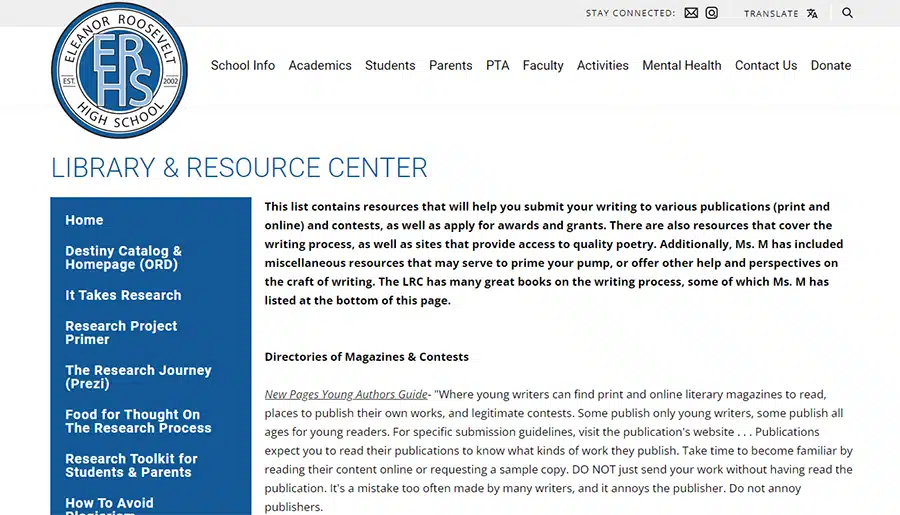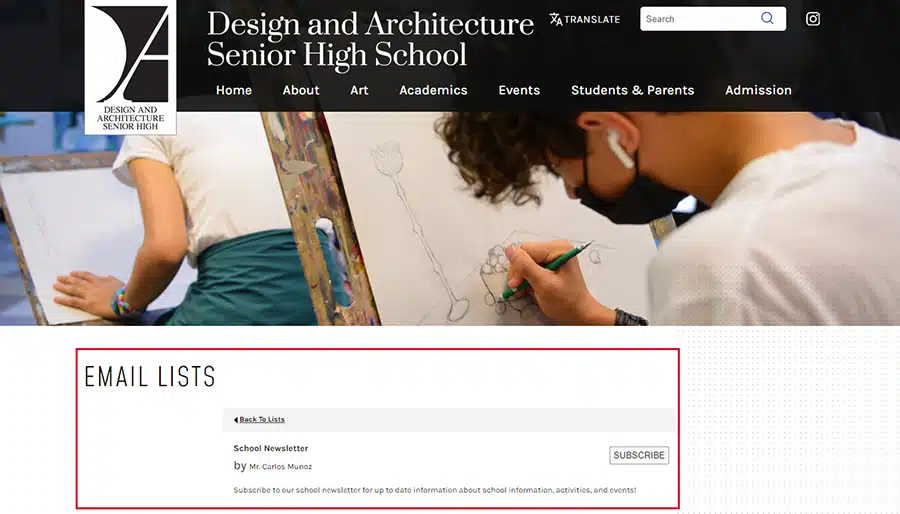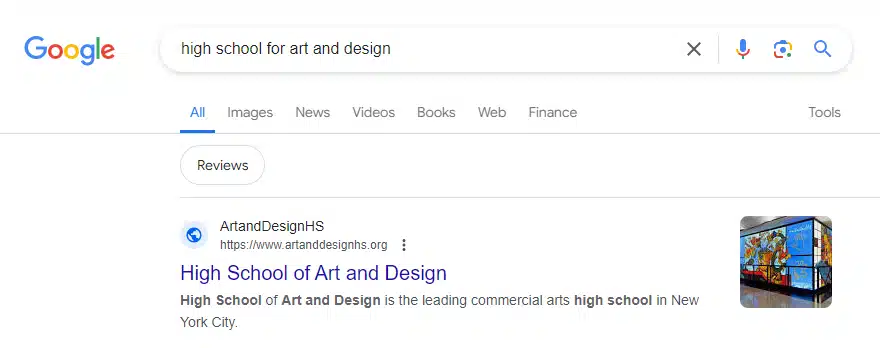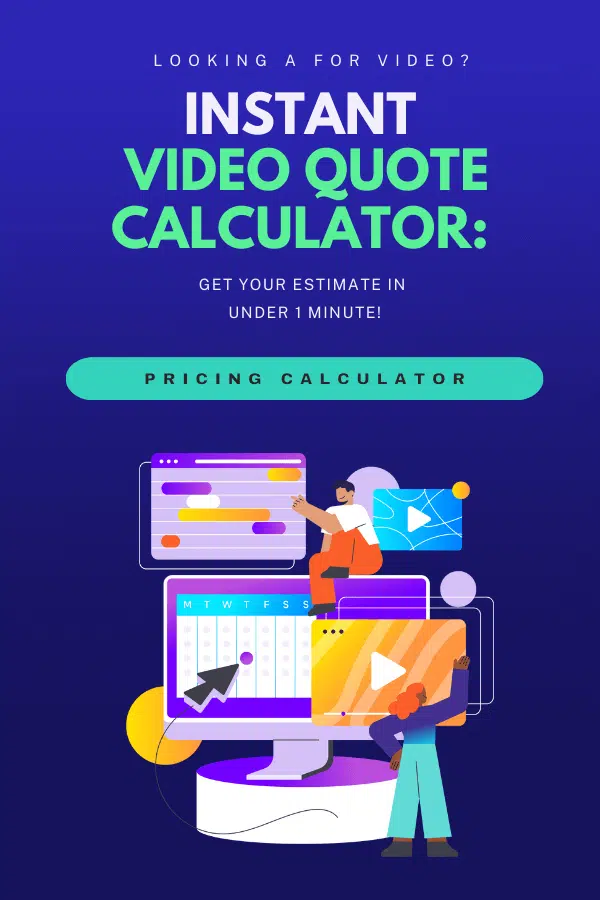School Marketing Plan 101 (and the 10 Best School Marketing Strategies!)

Written by Florencia Corazza
Content Writer and Co-Editor
09/07/24
Author: Florencia Corazza
13 min reading
MarketingStrategy

When you need an effective and efficient method to stand out in a sea of competitors, and attract and retain students, school marketing is your best option. Using the right strategies will allow you to showcase your school’s unique offerings and strengths while reaching your target audience on a closer level, building a strong community and online presence, and overall enhancing your reputation and image.
However, if this is the first time you’re hearing about it, knowing where to even begin creating your school marketing plan can be difficult. But worry not, because in today’s blog post, I’m going to over the steps to create a basic marketing plan as well as share the top 10 strategies you can implement.
Shall we get started?
Table of Contents
How to Build a Basic Marketing Plan for Schools
Creating a solid school marketing plan is essential for to attract and retain students, engage with the community, and build a strong reputation. But it’s not something you can come up with out of thin air, so here’s a step-by-step you can use as a guide:
1. Define Your Objectives
The very first step is identifying what you want to achieve with your marketing for schools. This will set the basis for the entire strategy, so you need to try and be as specific as possible. So, do you want to increase enrollment? Improve community engagement? Maybe solidify your school’s reputation?
Whatever you choose, you should remember to keep your objectives SMART. That is, Specific, Measurable, Achievable, Relevant, and Time-Bound. Sticking to these parameters will ensure that your goals are realistic and attainable within a certain time frame.
2. Identify Your Target Audience
You probably already have someone in mind as the target audience for your school marketing plans. However, simply thinking about “potential or current students” won’t cut it, as it’s too general and too broad.
What you should do is conduct audience research to thoroughly understand who your audience will be. This is not only limited to their demographics, but also their interests, their needs, and their pain points. Truly knowing your audience will go a long way in helping you tailor your messaging and choose the right marketing channels to reach your target.
3. Discover Your Unique Value Proposition
What sets you apart from other schools? Is it your infrastructure? Your amazing team of teachers and professionals? Whatever it is, you need to determine what makes your school unique and articulate it as your Unique Value Proposition, or UVP for short.
Begin by listing your school’s strengths, such as any specialized programs or extracurricular activities you might offer, and then narrow them down to the ones that truly make your institution shine.
4. Set a Budget (and Stick to It!)
Funds are extremely important for any organization, but especially so for schools because it’s often quite limited. That’s why it’s essential to determine how much money you’re willing to spend on school marketing and set a budget. Doing this will allow you to better decide on the scope of your marketing for schools and choose the strategies that offer the best return on investment.
5. Choose Your Marketing Channels
Remember that step about researching your audience? Well, here’s where you’ll need all that information you’ve (hopefully!) collected.
In this step of the school marketing plan, you’ll have to decide which channels you’re going to use to reach your audience. This can include social media platforms, your school’s website, email newsletters, local media, SMS campaigns powered by bulk SMS software, and anywhere else your targets would usually come across information about you.
6. Select Your Strategy and Create a Content Plan
We’ll go over the details on the different strategies you can choose in a minute. For the time being, just know that this is the step of the school marketing plan where you have to make that crucial decision: Which strategy will you go for?
Once that’s settled, you’ll need to set up a content calendar outlining what pieces you’re going to share, when, how often, and through which channels. This will help you keep organized and will make monitoring results a lot easier.
7. Implement and Monitor Your School Marketing Plan
It’s time to put your plan into action! Share your content, send your emails, or plan your events. Then, keep an eye on its performance to see whether it’s actually working. To do that, you’ll have to monitor certain metrics such as engagement rates, website traffic, and enrollment numbers. Of course, the metrics you’ll keep track of will depend on the strategy you’re implementing. But regardless of that, this final step will help you measure your plan’s success and inform you on whether you need to make any adjustments.
10 Effective Marketing Strategies for Schools
The list of strategies you can leverage for school marketing is endless, as your creativity (and budget!) is the limit. So, here’s a quick summary of the 10 most popular and effective strategies for marketing for schools:
1. Video Marketing
There’s nothing quite as powerful as video content when it comes to engaging the audience while showcasing your school’s facilities, culture, and environment. It’s the combination of visual and auditory elements which make the content easier to consume, understand, and remember. If you add storytelling to that mix, you’ll also have a direct way to tap into your audience’s emotions and create something that resonates with them.
For those reasons, video marketing is our first suggestion when it comes to marketing for schools. You should create compelling pieces sharing student experiences, highlighting academic programs, promoting extracurricular activities, and showing off campus facilities.
Use video marketing as your strategy if you want to attract your audience with valuable information delivered in a bite-sized, compelling medium.
2. Social Media Marketing
If your school marketing goal is to interact with your audience, social media channels are the perfect place to do so. If you don’t already have a profile on at least one of the major social media platforms like Facebook, Instagram, or Twitter, you should get started right away.
Start small, choose the one where your target audience (students or their parents) hang out the most at, and share your latest school updates, student achievements, exciting events, and any other engaging content you can think of. Do so regularly and interact with your followers by responding to their comments and messages. This will help you get closer to them and build a solid online community.
Use social media as part of your school marketing plan if you want to build closer relationships with your audience and engage them.
3. Review Management
Past students and their parents can be great advocates and supporters of your school, and provide immense help when it comes to your school marketing efforts. After all, who’s best to promote your institution than the people who’ve had great experiences attending to it? So, you should allow and encourage your alumni to leave reviews about your school.
While it’s true that you’ll most likely get a few negative reviews here and there, it doesn’t necessarily have to be a bad thing. As long as you reply to them quickly and address any concerns with sensitivity, you can improve your transparency and build trust with your audience.
Allow and manage reviews (even negative ones!) to improve transparency and build trust in your school.
4. Content Marketing
Valuable content that directly addresses your students’ and their parents’ concerns and potential questions will go a long way in positioning your school as a reliable resource and trusted authority. Besides video content, as I’ve mentioned, you can also create blog posts, articles, guides, and infographics.
But before you start creating content, you need to do some research and find out what your alumni need or want to know. Besides addressing their educational needs and how you can help them with that, you need to offer personalized content they’ll find useful. For example, you can upload the bell schedule, bus routes and timetables, guides on how to submit academic papers or sign up for a scholarship.
Focus on content marketing if you want to position your school as a reliable source of information and a reputable authority in the industry.
5. Community Involvement
Taking part in local community events and joining relevant educational initiatives will help you build strong community ties while boosting your school’s image. The best part is that you don’t have to go big about it or do it every week. Something as simple as sponsoring or encouraging community activities or engaging in community service projects and inviting your students and their parents to join can be a great place to get started on this school marketing strategy.
Get involved in your local community to build stronger relationships with prospective students and enhance your school’s reputation.
6. Open Houses and Virtual Tours
When enrollment season is getting closer, you must host regular open houses so people can check out your school’s facilities and get familiar with your programs and everything you have to offer.
If in-person tours are not possible due to lack of time or resources, you can even host virtual tours! As I’ve mentioned before, video content has an immense reach and is very easy to distribute, so you can share your virtual tour on your social media channels, email newsletters, and even embed them on your website.
Offer in-person or virtual tours as part of your school marketing plan to provide prospective students and parents with a firsthand experience of everything your school has to offer.
7. Email Marketing
Your school marketing plan should ideally always include email newsletters as an effective way to communicate with parents and students. You can send biweekly updates about school news, upcoming events, and any important announcements your student body and their parents should know about. There are two important aspects about newsletters: subject lines and personalization. The former will encourage recipients to open the email whereas personalization will help make them feel valued.
Leverage email marketing for an effective way to communicate with your audience and keep them updated on important developments.
8. Paid Advertising
While paid advertising is not something we usually recommend because it can certainly become expensive in the long run, I still think it’s worth mentioning it because it can be quite useful in specific situations.
With this school marketing strategy, you’ll have to create ads and then upload them to a platform such as Google Ads, YouTube Ads, or other social media ads to share them. Of course, you’ll have to pay for that service, but what’s great about it is that you be highly specific on your targeting, meaning you can choose your desired demographics, interests, online behaviors, and even location, among other things. Moreover, you can encourage people to take specific actions, such as clicks, sales, or leads.
Use paid advertising to ensure the right audience sees your advertisement and maximize its effectiveness.
9. Search Engine Optimization (SEO)
In today’s digital age, people just have to hop on the internet to find information about anything they want, including schools. For that reason, you’ll want to set up a website and optimize your landing pages and content to make them appealing for search engines.
This way, you’ll rank higher in the search engine result pages (SERPs) and your visibility and organic traffic will increase exponentially. The very first steps you need to take to incorporate SEO into your school marketing plan are using relevant keywords, creating high-quality content, and making your website mobile-friendly.
Focus on Search Engine Optimization to improve your visibility online and attract more prospective students.
10. Partnerships and Collaborations
Collaborations can be immensely valuable to your school marketing efforts because they can boost enrolment and engagement while enriching the educational experience for your students.
By partnering with local businesses, organizations, and even media outlets, you can reach a broader audience by having them promote your school events and achievements through their networks, for example. Moreover, joint initiatives, such as internships or workshops with industry partners can make your school more attractive to prospective students and their parents.
The key to this school marketing strategy is to take the time to look for organizations whose values and goals align with your school’s and then, draft a compelling proposal that clearly outlines the benefits for both parties.
Consider partnering and collaborating with prominent figures in your community or industry to reach a wider audience and improve your school’s visibility and offerings.
Do You Need a Video for Your School Marketing Plan? Yum Yum Videos Can Help!
With over 12 years of experience in the industry, we’ve created hundreds of explainer videos for clients in all kinds of niches, including the education industry. Our hard work has allowed Yum Yum Videos to become a recognized leader in the market, and now we’re ready to give you a hand with your school marketing needs.
The only way we’re able to do that, is thanks to our exceptional team of passionate and talented professionals in animation, design, and video production who all ensure a simple and smooth process for our clients while taking great care of every detail in each video we create.
We take pride in working closely with you and thoroughly understanding your school’s goals, mission, and values so we can create video content that will exceed your expectations and that your students will love.
If you’re ready to take your school marketing to the next level through the ´power of video content, just get in touch! We’ll be happy to hear all about your plans and ideas and see how we can help you.
Wrapping Up
In order for your school to thrive in the modern educational environment, you need to equip yourself with the right tools for the job. Outlining a solid school marketing plan is the most effective way to get started, and luckily, you’ve got all the necessary information to do so in this post.
Now that you know the essentials of building a basic marketing plan and explored our favorite marketing strategies for schools, you can start chasing after your goals with the certainty that you will achieve them. Just be patient, do your research, and start experimenting until you find out what works best for you and what your audience enjoys the most.

Florencia Corazza – Content Writer and Co-Editor
A skilled writer, translator, and co-editor for our web and blog content. As a self-defined "wordsmith," she’s talented in adapting the latest marketing news into all kinds of digital formats. If she’s not watching the latest Sci-Fi show on Netflix, then can find her tending to her perfectly reasonable number of plants.








